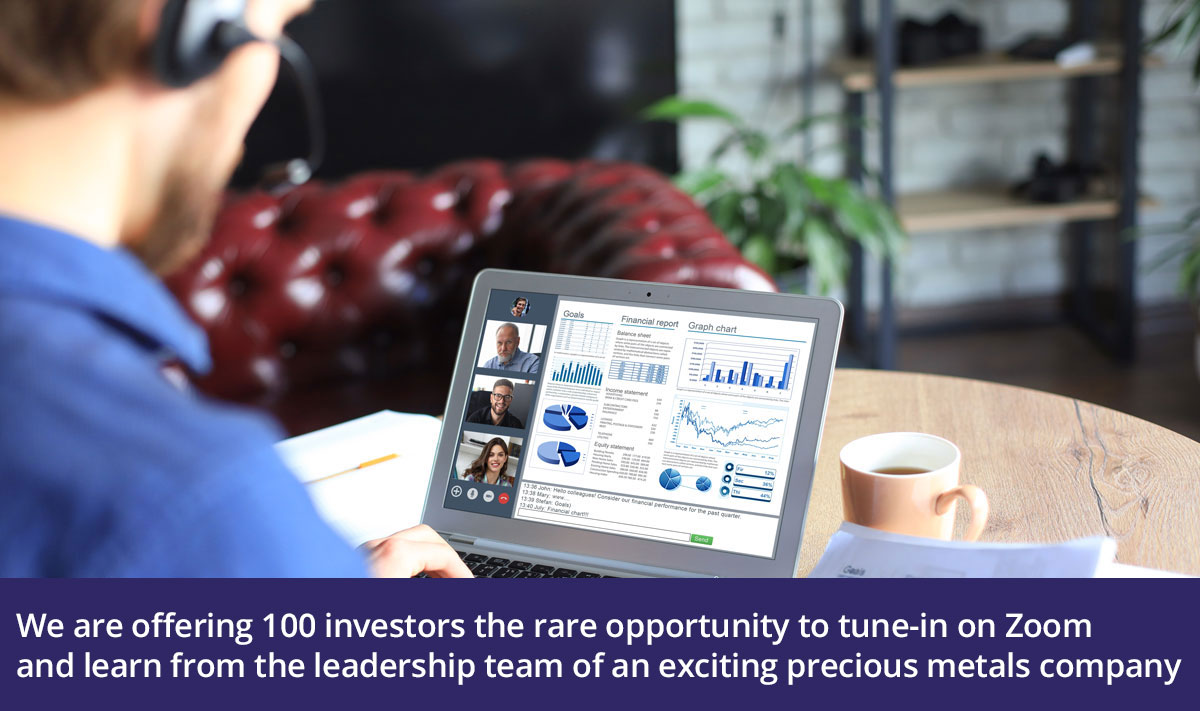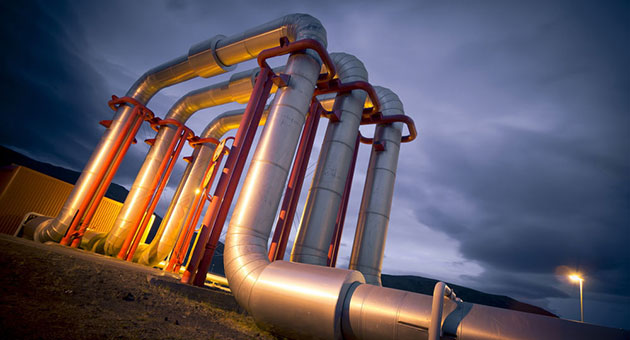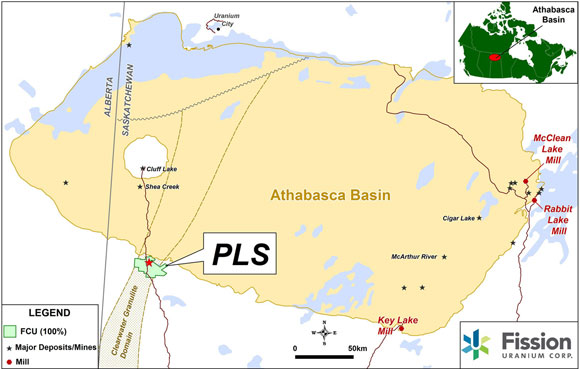The Energy Report: Kenny, you are a former MLP portfolio manager. You've also been an analyst at a bulge-bracket investment bank, Goldman Sachs Group Inc. (GS:NYSE), where you followed the energy and power sector, as well as MLPs. Is Alerian similar to Standard & Poor's or Russell Investment's indices?
Kenny Feng: Yes, it's similar in that we are purely an indexing firm that maintains benchmarks for the MLP sector. But we are also an education provider for the asset class and aspire to be the Wikipedia of MLPs—the first-pass information source for an investor who comes across the sector through an article in Barron's, a commercial on CNBC, a conversation with a friend or financial advisor, or even through one of these interviews at The Energy Report. So besides the statistics we provide, we also speak at conferences and conduct free teach-ins to educate the investment community about MLPs.
TER: Do you manage any assets?
KF: No, and because we don't manage any assets, the investment community views Alerian as an unbiased source of information. We field questions for investors across the spectrum—from individuals who have $100 to invest, to the multibillion-dollar institutions that are conducting due diligence on the sector prior to making a percentage allocation to the asset class.
TER: How does Alerian make money?
KF: We license our indices to investment banks and other financial service companies that create investment products, including exchange-traded funds (ETFs), exchange-traded notes (ETNs) and total return swaps (TRS). There are about $10 billion ($10B) in assets that are now linked to our indices.
TER: Your indices include the Alerian MLP Index (AMZ:NYSE), the Alerian MLP Infrastructure Index (AMZI:NYSE), the Alerian Natural Gas MLP Index (ANGI:NYSE) and the Alerian Large Cap MLP Index (ALCI:NYSE). What factors cause you to add or delete a security to or from one of your indices?
KF: We follow a strict, formula-based methodology that is completely transparent and replicable, and all of the information used to construct our indices is publicly available. Regarding criteria, the primary factors are nature of business, distribution policy, float-adjusted market capitalization and liquidity. The latter two criteria are in place to address the sector's unique nuances. First, more than two-thirds of partnerships have a market capitalization of less than $2B. Second, only 70% of the shares outstanding are held in public hands. And third, daily dollar-trading volume averages less than $900 million ($900M) per day. Our indices are designed not just from the perspective of what makes sense intellectually, but also what is actually investable given the size and liquidity constraints of this particular universe.
Just an additional point on transparency: We believe that those choosing to utilize an index-based approach to investing do so because they value knowing exactly what is in their portfolio at all times as well as exactly what criteria will dictate changes to it.
TER: Back on Oct. 5, you participated in a panel discussion at the second Annual Platts MLP Symposium in Las Vegas. The topic was "Benefits and Challenges for Institutional Investors in MLPs." What types of institutional investors were present? Were there generalists there? If so, is the MLP idea still something new for many of these people?
KF: At this point, most U.S. investors, both institutional and retail, have at least heard about MLPs, but the extent of their knowledge varies greatly. Some have been invested in the sector for a decade or more and have enjoyed the 18% annualized total return that MLPs have delivered, as measured by the Alerian MLP Index. Other institutions entered the sector as the U.S. economy was recovering from its financial crisis, understanding that a double-digit equity yield in a sector that was maintaining and growing distributions overall was worth solving some of the back-office challenges created by Schedule K-1s and state tax filings. There are still others who are currently doing their initial or final stages of due diligence before making an allocation.
As far as generalists, the institutions that are just beginning to dig their feet into this asset class now tend to be what we call derivative investors. It might be an energy portfolio manager who's looking for a derivative way to play the U.S. shale boom that she learned about through her investment in exploration and production (E&P) companies. It might be a utility investor who is looking for a derivative way to play the inelastic energy demand theme that he's loved for years through his investment in utilities. But definitely, there are more and more people coming to know this asset class and doing the homework to understand it better.
TER: What were the key ideas that you presented to the panel and to the audience? I'm sure they wanted to know about tax advantages and yields, but what were the most important points?
KF: First and most importantly, MLPs are an investment in the long-term build-out of domestic energy infrastructure. The Interstate Natural Gas Association of America has estimated that $250B of new natural gas infrastructure needs to be built over the next 25 years. Compared to a current market capitalization for the sector of about $325B, it's a sizable investment.
Second, the math is compelling. A 6% tax-advantaged yield, plus a conservative 4–5% distribution growth, results in a double-digit annual total return over the long term.
Finally, interstate energy infrastructure assets benefit from generally inelastic energy demand, high barriers to entry and federally mandated, inflation-indexed tariff increases. These are the main factors that draw institutions to this sector.
TER: We're all familiar with the crash in the commercial real estate market. We drive by these strip malls on an everyday basis, and we see them empty. Many of these malls were managed by limited partnerships and real estate investment trusts (REITs). Could we ever see anything like this in the energy sector?
KF: I'll give you the counterpoint to real estate, but I'll also give you a caveat. First, MLPs generally do not build energy infrastructure assets on speculation. Everyone saw that in the real estate boom; it was driven by the if-we-build-it-they-will-come approach. Tenants were not lined up before the building was constructed. It was only when the building was built and available that potential tenants came in and checked out the residential and commercial properties to compare options and costs.
However, on the energy infrastructure side, interstate pipelines line up their customers, meaning the shippers or producers, in advance, through what's called an open season. The open season gives the pipeline owner an indication of interest in a pipeline at a particular rate. Generally speaking, roughly 70% of the capacity of a pipeline has to be contracted before an MLP will begin the construction process.
I'd also emphasize that energy demand growth has been remarkably stable over time. A huge part of that is a function of the build-out of President Eisenhower's Interstate Highway System. He created suburbia. Regardless of whether you drive your child to soccer practice or go to the grocery store, you're contributing to consistent energy demand.
In spite of dramatic improvements in the fuel efficiency of vehicles and the energy efficiency of household appliances, energy demand growth has been very consistent at roughly 1% per annum over the past 30 years.
Here's my caveat: The U.S. consumer does have a limit. There was a breakdown in the commodity environment a few years ago that was triggered by demand destruction. When gasoline starts to push $4 per gallon, marginal usage is going to be pared back. In other words, the American family road trip to Disneyland is replaced with a staycation.
TER: The economic cycle works.
KF: Exactly—it just won't be as extreme as you saw with REITs, because for the most part, only discretionary energy demand is impacted.
In comparing energy infrastructure MLPs to real estate, they are both hard assets. Investors like them because steel in the ground and concrete in the sky are both very tangible as are the tariffs and rents, respectively, that come with them. The difference between MLPs and REITs is that MLP cash flows benefit from lower macroeconomic volatility, evidenced by the fact that no constituent of the Alerian MLP Infrastructure Index cut its distribution during the financial crisis. Those companies still were able to maintain or grow their distributions through that period.
TER: Is midstream infrastructure keeping up with demand?
KF: Yes and no. What MLPs do is connect areas of supply (production) to areas of demand (consumption). Because we've seen shifts to emerging supply areas like the Bakken and liquids-rich Eagle Ford, along with shifts to new demand centers as the population moves to and grows in the South and Southwest, a lot of new infrastructure needs to be built. As I mentioned earlier, MLPs generally do not build on speculation, so sometimes bottlenecks will occur while that construction takes place. West Texas Intermediate (WTI) crude is currently trading at a meaningful discount to Brent crude due to the lack of pipeline takeaway capacity in Cushing, Oklahoma, where the NYMEX oil contract is settled.
TER: Why do energy companies do drop-downs? Why do they create MLPs?
KF: There are two reasons. Speaking specifically about the drop-down MLPs created by publicly traded energy companies, it often has to do with valuation, and management's perception that investors are not properly valuing the company's logistics assets. For example, Marathon Petroleum Corp. (MPC:NYSE) created MPLX LP (MPLX:NYSE) so that its pipelines and storage tanks would be ascribed a higher valuation multiple consistent with the lower business risk profile of those assets as compared to the parent's refinery operations.
TER: It's a way of spinning out a portion of the business.
KF: More or less. The drop-down MLP is a little bit different from a spinoff because the parent company usually maintains control over the assets through ownership of what's called the general partner.
Logistics assets tend to be a bit boring—6% yield and 4–5% distribution growth leading to low double-digit returns. But there is a certain type of investor who is focused on the MLP space for just that reason.
The other reason why a publicly traded energy company might create a drop-down MLP is to finance its future capital spending plans.
TER: We've seen some initial public offerings (IPOs) for MLPs over the past year. Could this space become crowded to the detriment of the instruments as a whole?
KF: It certainly could, but investors are becoming more knowledgeable every day, and there is greater differentiation among MLPs. If you look at the investor market in the 1990s or even in the early 2000s, most MLPs were of the same business type and business model. They tended to be pipeline and storage companies that moved petroleum products and natural gas.
Over the past 10 years, many different types of assets have moved into this structure. We regard the MLP sector as more of a structure than an asset class because there are many different types of businesses that are actually in the MLP structure. Now there is greater differentiation among MLPs, not just by asset type but even in terms of investing style. If you invest in a large-cap MLP, it is unlikely that it is going to grow its distribution in excess of 10–15% per year over the long term because it's so big—it just requires more to move the needle. On the other hand, you probably have more safety in your yield because its businesses are more diversified, and there may be natural hedges across different business lines.
There are also smaller, growth-oriented partnerships, which require less to move the needle. Smaller partnerships, however, also tend to be riskier investments because their assets may be concentrated in fewer geographic areas and business lines.
Variable distribution MLPs are also coming into vogue with the recent IPOs of a handful of nitrogen fertilizer and refining partnerships. The ownership of these securities tends to be much more heavily weighted toward institutions, which are investing in a secular growth trend that they see for this particular type of business. The retail investor generally prefers a steady yield derived from stable and growing cash flows.
TER: Are you seeing any novel ideas emerge in any of these newer issues of MLPs?
KF: We've seen a number of IPOs that derive the majority of their cash flow from businesses like upstream, wholesale distribution and the aforementioned nitrogen fertilizer and refining. These businesses are not new to MLP investors, but the fact that more of them are finding their way into the structure means that a market exists for them. A business line that is relatively new to the structure is frac sand, which had its premiere with the IPO of Hi-Crush Partners LP (HCLP:NYSE). Shortly afterward, Natural Resource Partners LP (NRP:NYSE), a royalty MLP that recently celebrated its tenth anniversary as a publicly traded partnership, announced that it had acquired frac sand reserves, which speaks to the acceptance of this asset type into the MLP structure, not just by one esoteric company but potentially others as well in the future.
TER: Are there any other novel MLPs you can mention?
KF: Another interesting story is Northern Tier Energy LP (NTI:NYSE), which is a refiner with a variable distribution policy. When the partnership's management team and bankers went on their IPO road show, the offering range was $19–21, which is pretty standard for MLPs. But the deal priced at $14, presumably because the bookrunners feared that investors didn't understand the value of the asset and they didn't want the units to break their IPO price. Today, a few months later, it's trading above the high end of that $19–21 range, so we just might see more refining MLPs and variable distribution MLPs—today there are only three and seven, respectively—on the horizon.
TER: I have enjoyed speaking with you very much. Thank you.
KF: Thank you, George, I appreciate it as well.
Kenny Feng, CFA is the president and CEO of Alerian, an independent provider of objective indices, data sets, and analytics for the master limited partnership (MLP) sector. Over $10 billion is directly tied to Alerian's indices, including the leading benchmark of MLP equities: the Alerian MLP Index. Feng is a former managing director and portfolio manager of SteelPath Capital Management, a Dallas-based MLP investment manager. Prior to his experience at SteelPath, Feng covered MLPs, electric and gas utilities and diversified gas companies at Goldman, Sachs & Co. in the firm's Global Investment Research Division. Feng graduated summa cum laude with a Bachelor of Science in economics from the Wharton School and a Bachelor of Arts in international studies from the University of Pennsylvania. He also serves on the advisory board of Midstream Business, a monthly publication addressing the need for business market intelligence on North American midstream energy infrastructure.
Want to read more exclusive Energy Report interviews like this? Sign up for our free e-newsletter, and you'll learn when new articles have been published. To see a list of recent interviews with industry analysts and commentators, visit our Exclusive Interviews page.
DISCLOSURE:
1) George S. Mack of The Energy Report conducted this interview. He personally and/or his family own shares of the following companies mentioned in this interview: None.
2) The following companies mentioned in the interview are sponsors of The Energy Report: None.
3) Kenny Feng: I personally and/or my family own shares of the following companies mentioned in this interview: None. I personally and/or my family am paid by the following companies mentioned in this interview: None. I was not paid by Streetwise Reports for participating in this interview.




























































